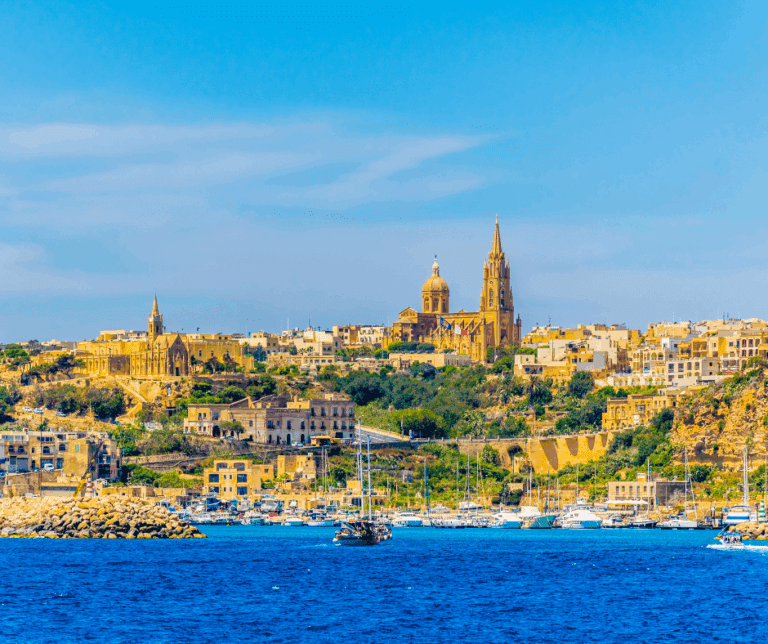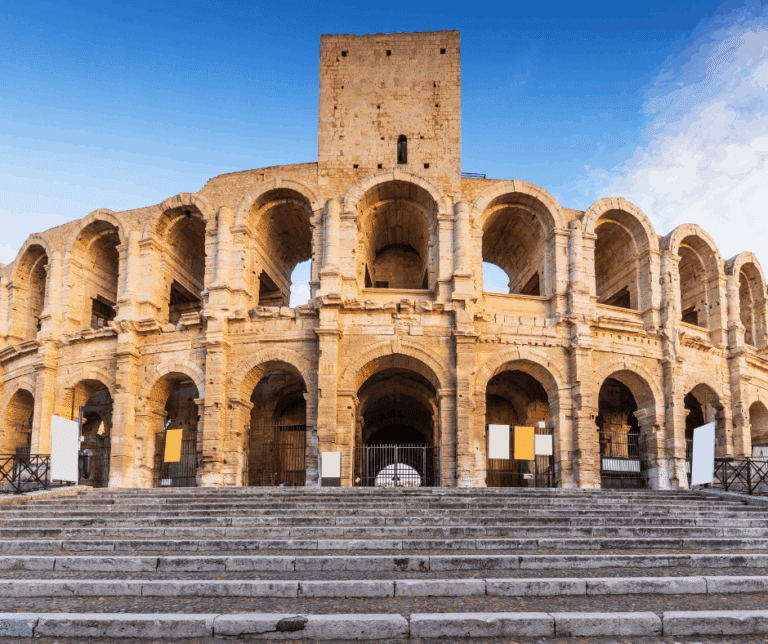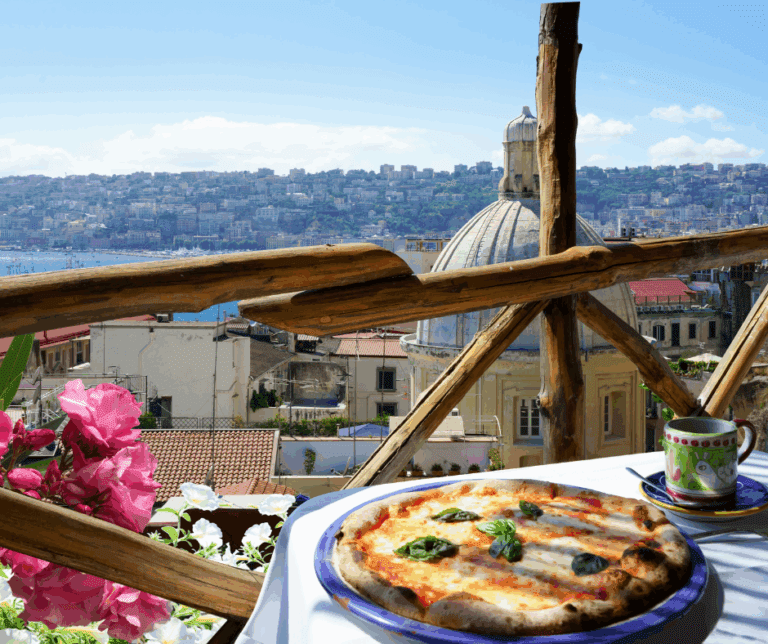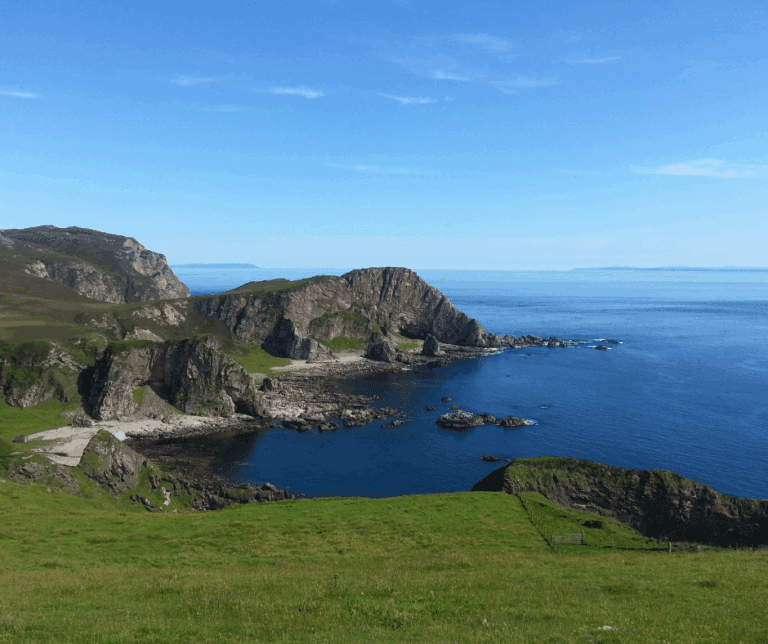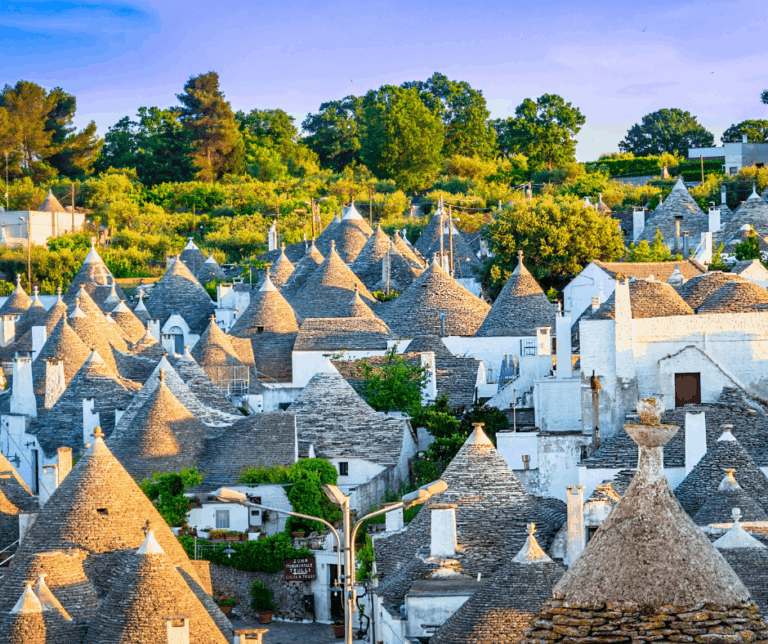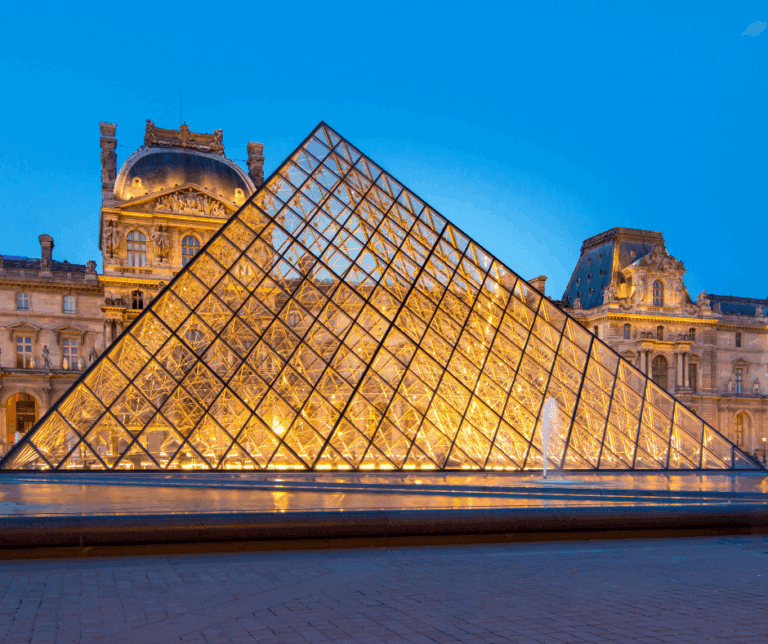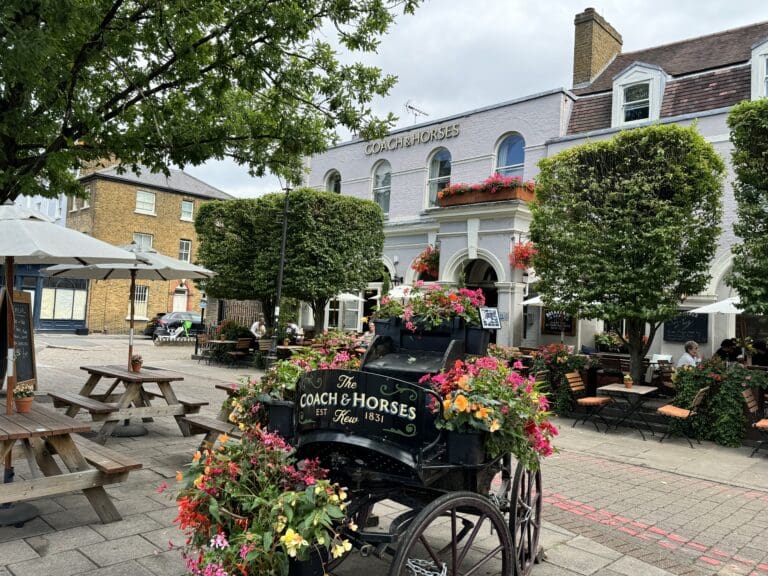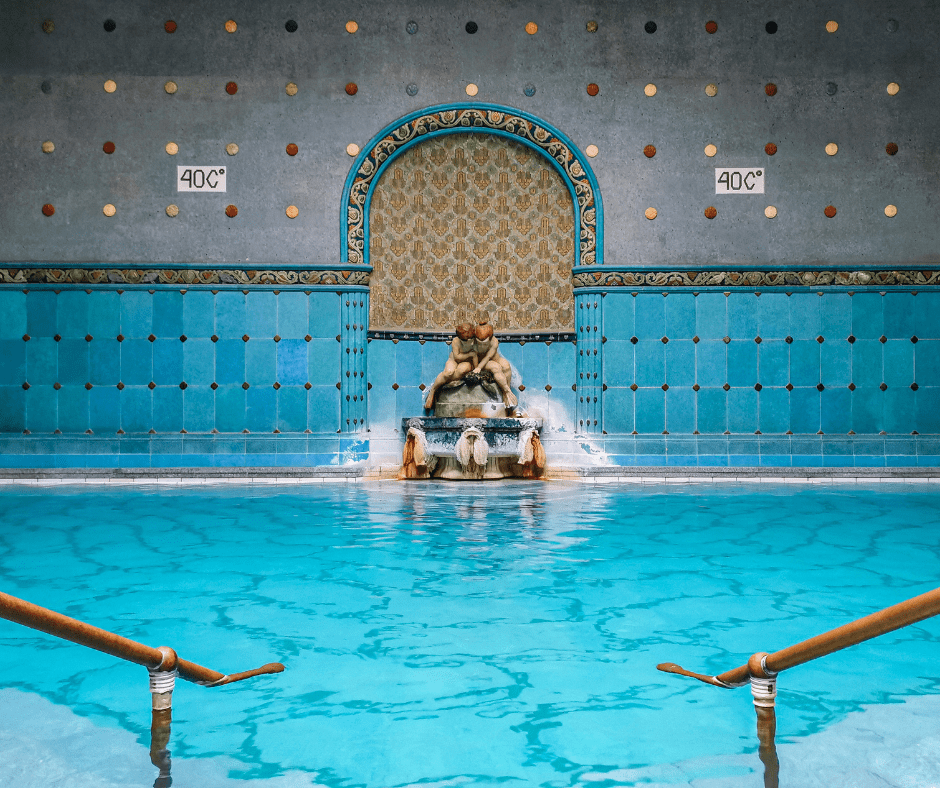
Imagine steam curling through the arches of a centuries-old bathhouse. Your feet press into cool marble, and the faint scent of minerals lingers in the air. You aren’t just unwinding—you’re stepping into a living tradition.
European spa towns have welcomed emperors, artists, and everyday travelers for thousands of years. All have been drawn by the promise of healing waters and the chance to restore body and spirit.
These historic spas are not relics—they’re very much alive. Today, you can still bathe in the same springs that soothed Roman soldiers and Renaissance royalty and inspired writers like Goethe and Twain.
Why Europe? A Legacy of Healing Waters
Europe’s long-standing spa culture emerged from a perfect mix of natural resources and historical legacy. The Romans engineered elaborate aqueducts and thermal bathhouses across their empire, many of which still function today.
In the Middle Ages, mineral springs were considered sacred healing sites. By the 18th and 19th centuries, spa towns had evolved into elite retreats, combining wellness with sophistication.
Today, you’ll find spa towns across Europe that fuse centuries-old traditions with modern luxury. It’s wellness with a story.
Baden-Baden, Germany – A Timeless German Spa Legacy

Tucked in the Black Forest, Baden-Baden is Germany’s most famous spa town, known since Roman times for its hot springs. The town’s twin treasures—Friedrichsbad and Caracalla Spa—offer very different but equally rich experiences.
Friedrichsbad delivers a 17-step bathing ritual rooted in Roman and Irish traditions. Here, eucalyptus fills the steam rooms, and warm mineral water flows through hushed marble chambers.
Just next door, Caracalla Spa welcomes guests into expansive indoor and outdoor pools in a more relaxed, swimsuit-friendly setting.
Where to Eat Nearby: Head to Rizzi WineBistro for a stylish lunch of Mediterranean-inspired dishes with a view of the park.
While You’re There: Visit the Museum Frieder Burda for a dose of modern art or take a gentle hike in the surrounding forested hills.
Bath, England – A Roman Spa Still Flowing Today
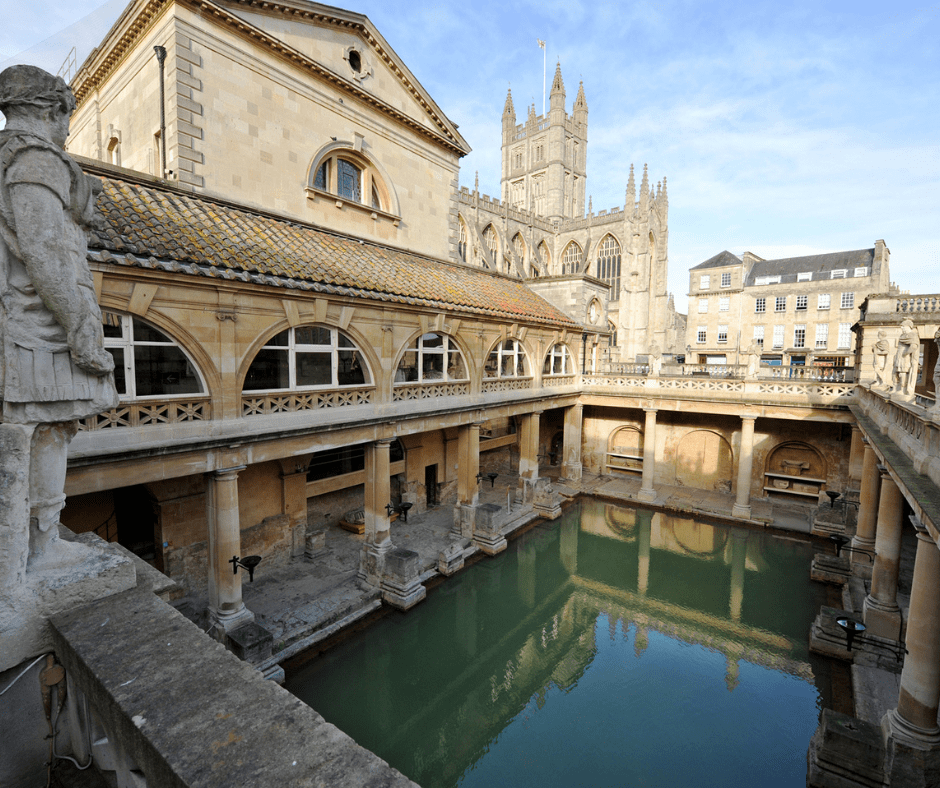
The city of Bath is home to the only natural thermal springs in the UK. First used by the Romans nearly 2,000 years ago, these waters still draw travelers today.
The original Roman Baths are now a museum, but the nearby Thermae Bath Spa offers a chance to soak in the same mineral-rich waters. Head to the rooftop pool, where warm mist swirls as church bells echo from Bath Abbey below.
Where to Eat Nearby: Try Sally Lunn’s Historic Eating House for a traditional Bath bun and hearty lunch in one of the city’s oldest buildings.
While You’re There: Wander through the Royal Crescent, or browse the boutiques in the artisan quarter.
Budapest, Hungary – Europe’s Capital of Thermal Baths
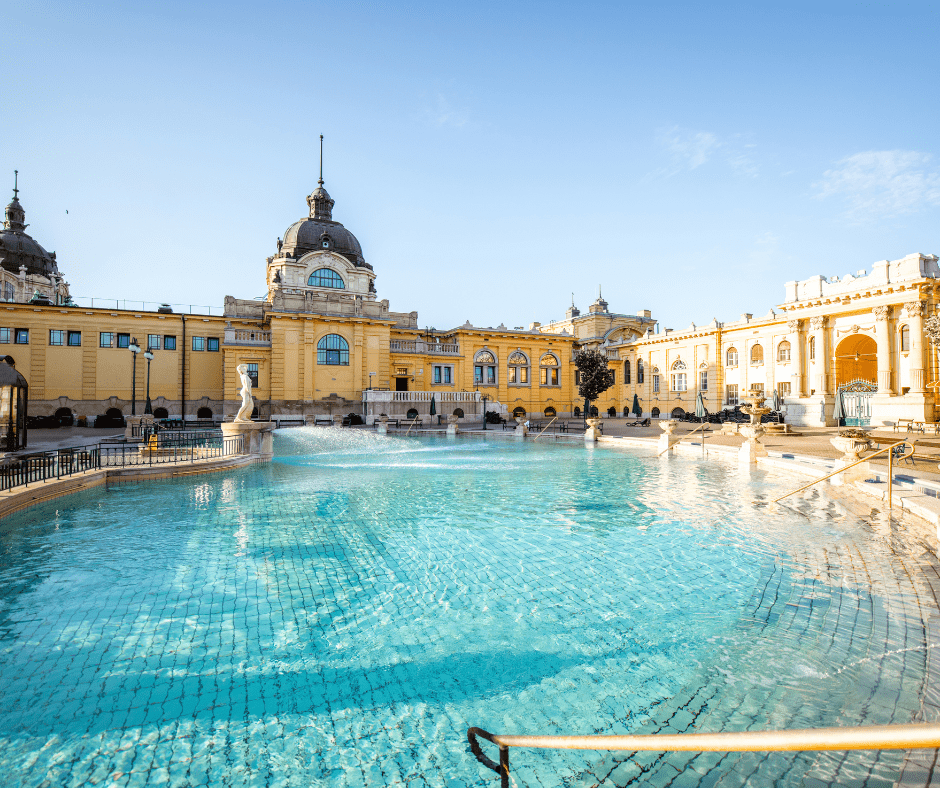
With over 100 thermal springs, Budapest has earned its title as the “City of Spas.” The city’s bathing culture dates back to Roman times and was further developed under Ottoman rule.
Among the most famous baths:
- Széchenyi Baths: Iconic yellow buildings, massive outdoor pools, and steaming water where locals play chess.
- Gellért Baths: Art Nouveau grandeur with mosaic-tiled pools and stained glass.
- Rudas Baths: Originally built in the 16th century, these Turkish-style baths offer a rooftop pool with panoramic views.
- Király Baths: One of the few remaining Ottoman-era baths, retaining much of its original layout.
Where to Eat Nearby: Café Gerbeaud for classic cakes, or Mazel Tov for modern Middle Eastern cuisine.
While You’re There: Stroll the Danube Promenade or explore the Castle District.
Karlovy Vary Czechia – Healing Waters & Habsburg Charm
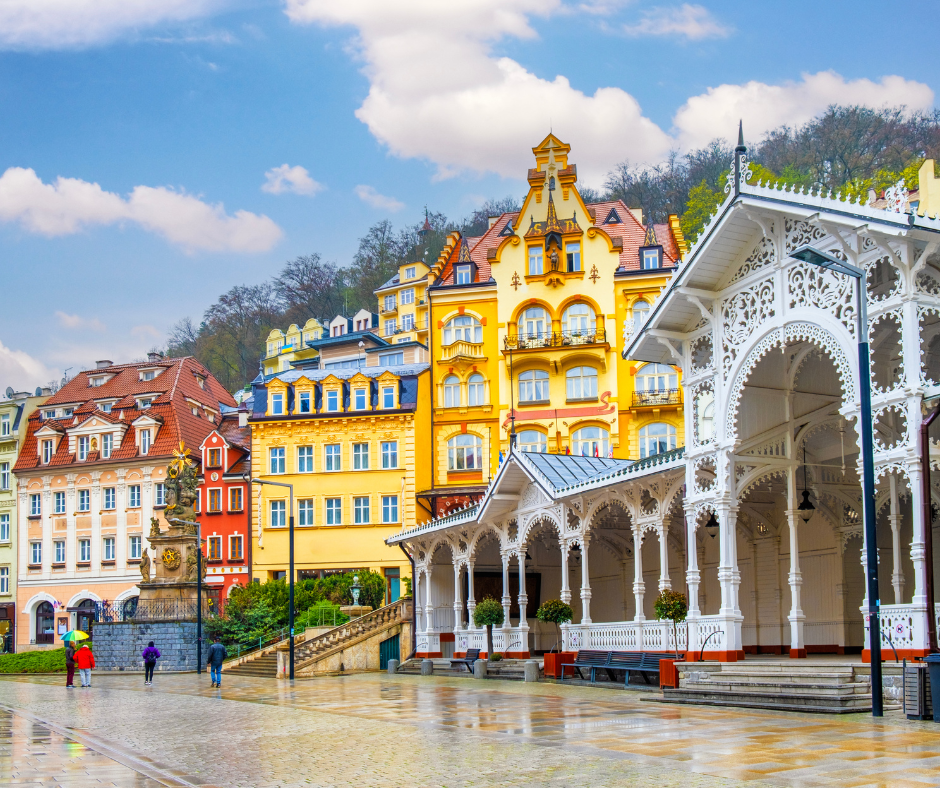
This Bohemian spa town has long attracted aristocrats, artists, and health seekers. With 14 main springs and pastel-colored colonnades, it’s a dreamy retreat steeped in 19th-century grandeur.
Guests stroll under frescoed ceilings, sipping hot mineral water from traditional porcelain spa cups. A mild sulfur scent accompanies each step. These waters are said to aid digestion and boost immunity.
Karlovy Vary is also featured in our Old World Central Europe Tour, giving guests time to explore the promenades and historic spa culture at their own pace.
Where to Eat Nearby: Café Pupp, part of the iconic Grandhotel Pupp, offers upscale Czech and international cuisine in an opulent setting.
While You’re There: Visit the Moser Glass Museum or take the funicular up to Diana Observation Tower for panoramic views.
Montecatini Terme, Italy – Tuscany’s Marble Sanctuary of Wellness
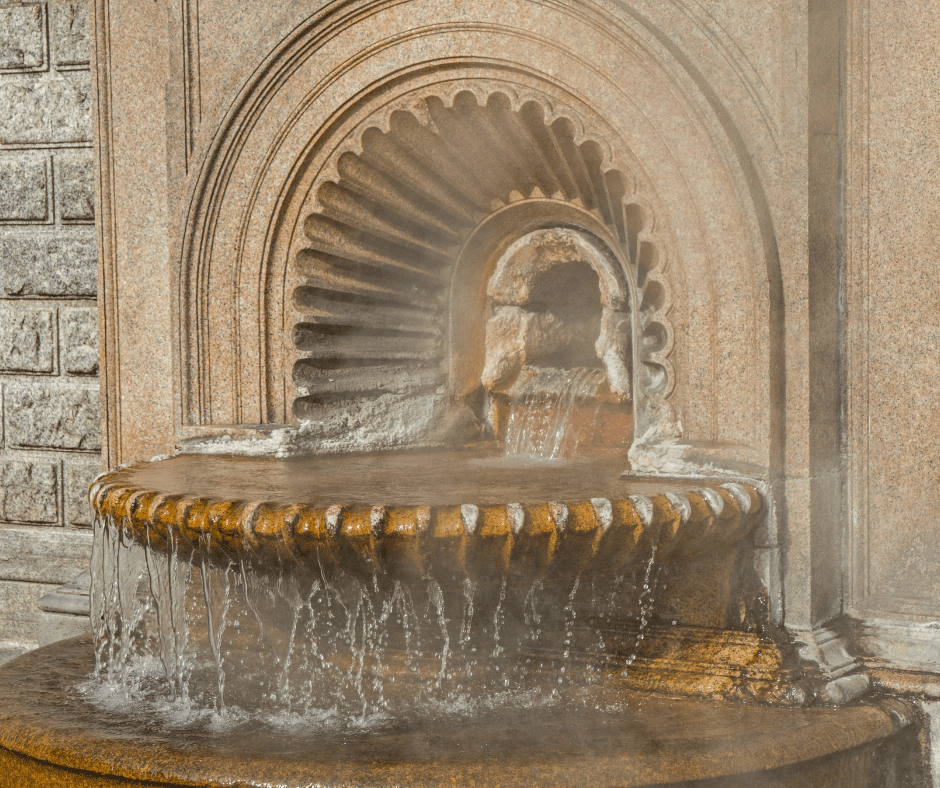
Located between Florence and Lucca, Montecatini Terme has attracted European elites for over a century. The town’s crown jewel, Terme Tettuccio, is a Neoclassical wonder surrounded by gardens and elegant walkways.
Step inside, and you’re greeted by soaring marble columns, intricate mosaics, and the soft sound of piano music. Visitors still “take the waters” here, tasting from fountains known for different health benefits.
Where to Eat Nearby: La Pecora Nera serves elegant Tuscan cuisine just steps from the spa complex.
While You’re There: Take the funicular to Montecatini Alto, a hilltop village with spectacular views and charming cafès.
Vichy, France – Aristocratic Waters of France
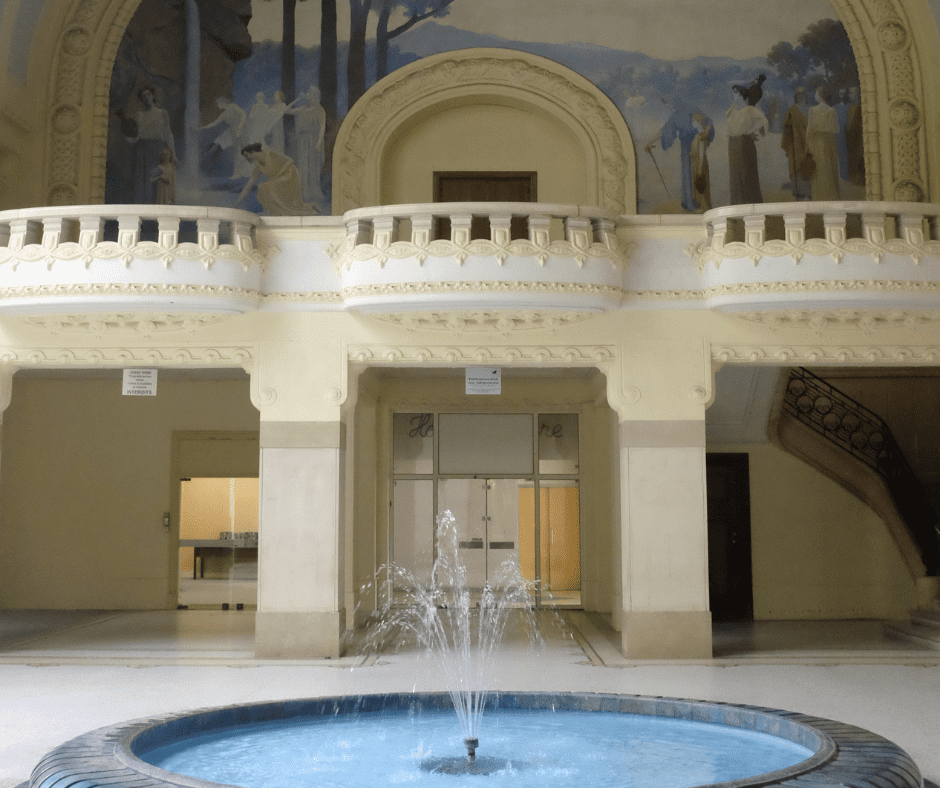
Napoleon, opera singers, and 19th-century nobility once flocked to Vichy for its mineral waters. Today, the town combines historic elegance with modern hydrotherapy.
Try a classic Vichy shower treatment, where jets of warm water flow over your body in rhythmic waves. A faint citrus or herbal aroma often accompanies the experience, thanks to essential oils used in treatments.
Where to Eat Nearby: Try L’Écrin de Marlène for refined French cuisine crafted with seasonal ingredients, just steps from the spa gardens. .
While You’re There: Visit the Opera House or explore the Hall des Sources for a taste of different mineral springs.

Planning a Trip to Europe?
We can help create your perfect itinerary!
- Worried you'll miss the hidden gems?
- How long should you stay in each place?
- Should you rent a car, train it, or both?
Piestany, Slovakia – Eastern Europe’s Best-Kept Spa Secret
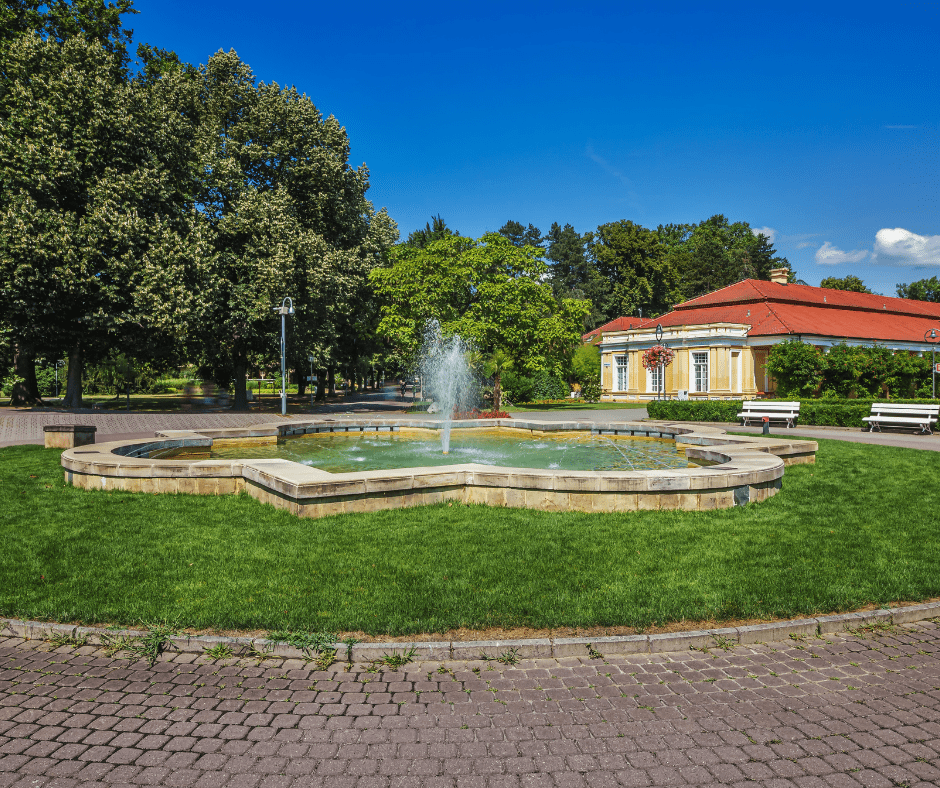
Less known than its Western counterparts, Piestany has a proud spa heritage dating to the Austro-Hungarian Empire. Its specialty? Sulfur-rich thermal mud, renowned for treating joint and mobility issues.
The experience here is raw and revitalizing: warm black mud is applied in thick layers, releasing a salty, mineral scent. Treatment rooms sit within ornate colonnades, offering a peaceful atmosphere between sessions.
Where to Eat Nearby: Head to Elizabeth Café & Restaurant for traditional Slovak fare with spa park views.
While You’re There: Explore the town’s charming bridges and sculpture walk, or visit the Balneological Museum.
Istanbul, Türkiye – Bathing Between Two Continents
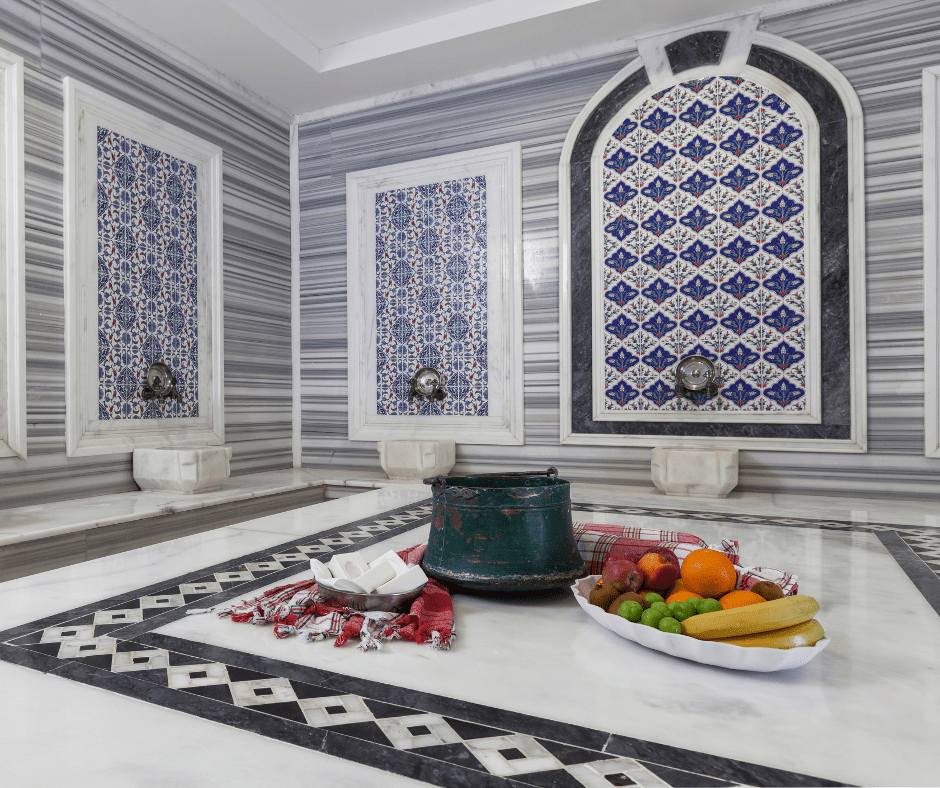
Straddling Europe and Asia, Istanbul’s hamam culture blends Byzantine, Roman, and Ottoman traditions. The city’s baths are steeped in ceremony and opulence.
Top choices include:
- Çemberlitaş Hamamı: Designed in 1584 by famed architect Sinan; features a large heated marble platform and private scrubbing rooms.
- Hurrem Sultan Hamamı: Built for the wife of Suleiman the Magnificent, located between Hagia Sophia and the Blue Mosque.
- Kılıç Ali Paşa Hamamı: Recently restored, offering luxury spa services in a historic setting.
Where to Eat Nearby: Enjoy traditional meze and grilled meats at Matbah, just steps from the historic center.
While You’re There: Explore the Grand Bazaar, Hagia Sophia, or take a Bosphorus cruise.
Caldas de Montbui, Spain – Roman Roots in Catalonia
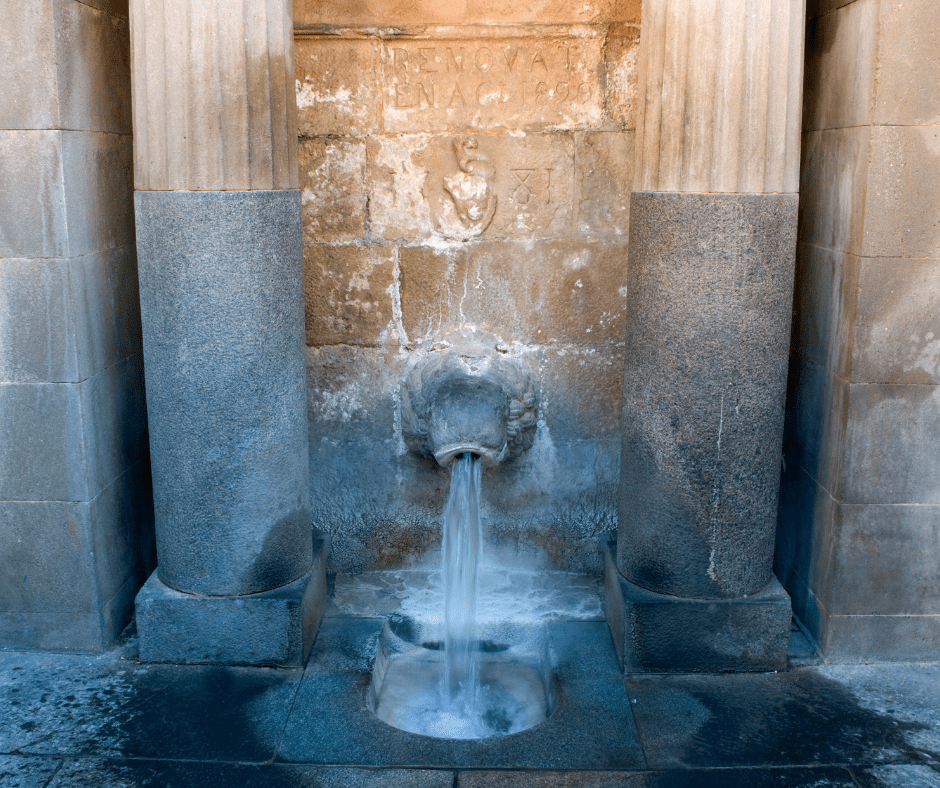
Just outside Barcelona lies Caldas de Montbui, one of Spain’s oldest spa towns. Roman baths dating back to the 1st century still serve as the foundation for modern thermal facilities.
Visit Termes Victòria, where you can enjoy hot spring treatments in a boutique hotel setting.
Where to Eat Nearby: Sample Catalan cuisine at Caldes d’Estrach or have a rustic lunch in the village center.
While You’re There: Visit the Thermalia Museum and enjoy views from the old Roman aqueduct.
Bad Ragaz, Switzerland – Alpine Serenity and Thermal Luxury
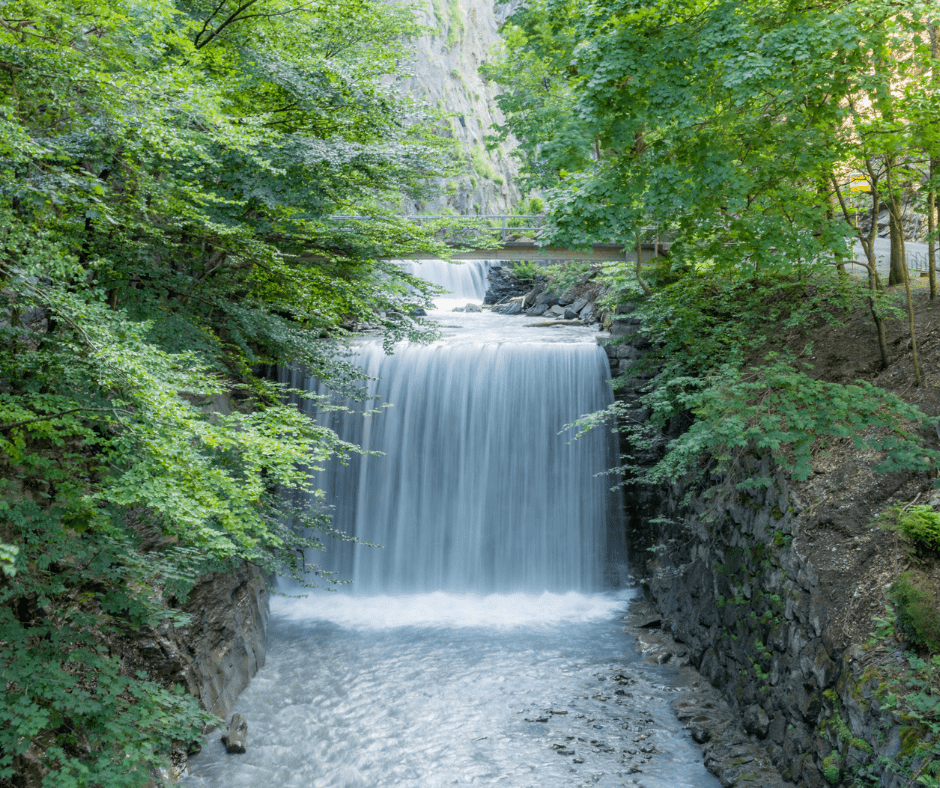
In the Swiss Alps, Bad Ragaz offers a luxurious take on thermal therapy. The Tamina Gorge, discovered in 1242, still feeds the town’s thermal baths.
The Tamina Therme spa features minimalist architecture, floor-to-ceiling mountain views, and a wide range of treatments.
Where to Eat Nearby: Enjoy Michelin-star dining at IGNIV by Andreas Caminada or a mountain-view lunch at Zollstube.
While You’re There: Explore the nearby Heidiland region or take a scenic train ride through the Alps.
Planning Your Spa Retreat the Right Way
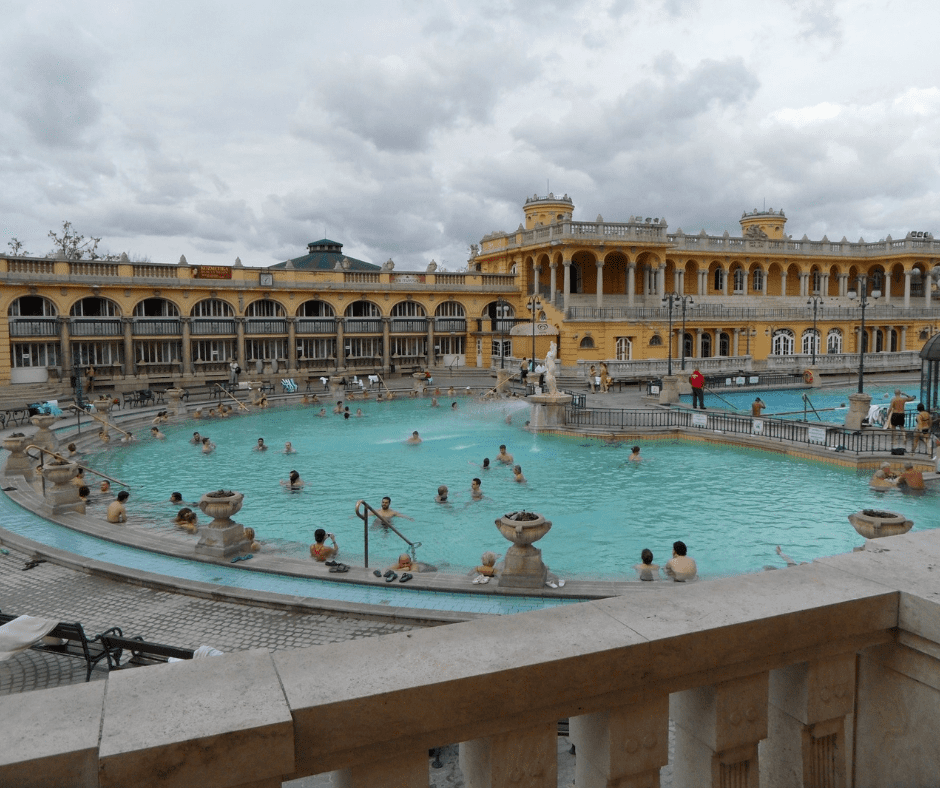
Ready to soak in some history? Keep these quick tips in mind:
- Etiquette: Some spas require nudity (especially in Germany); others insist on swimsuits. Check ahead.
- What to Bring: A swimsuit, towel, sandals, and water bottle. Most spas offer robes and slippers for rent.
- When to Visit: Spa towns are open year-round, but booking treatments in advance is wise—especially during summer and holidays.
- Know the Words: Look for signs like “therme” (Germany), “bains” (France), or “bad” (Dutch and German) to spot local spa facilities.
A Tradition You Can Still Touch
These aren’t just places to unwind—they’re portals to the past. Every drop of mineral water, every steam-filled chamber, connects you to centuries of healing, reflection, and self-care.
Close your eyes. Let the warmth surround you. You’re not just relaxing—you’re participating in something timeless.
FAQs
What are the most famous historic spas in Europe?
Baden-Baden, Bath, Budapest, and Karlovy Vary are among the most celebrated, each with deep-rooted traditions
What should I pack for visiting a European Spa?
Bring a swimsuit (unless otherwise noted), sandals, a towel, and a reusable water bottle.
Are historic spas in Europe open year-round?
Yes. Most operate throughout the year, though outdoor features may vary by season.
What’s the difference between a thermal bath and a spa treatment?
Thermal baths involve soaking in natural spring water. Spa treatments include massages, mud wraps, or hydrotherapy sessions.
Can I visit these spas on my own or should I book a tour?
Both options work. Tours add cultural insight, while self-guided visits offer flexibility and spontaneity.
Hi, I’m Jack Baumann – founder of Guidester. I’ve spent over 15 years living and traveling throughout Europe, and I created Guidester in 2014 to help others experience the best of what Europe has to offer. What started as a passion project has grown into a full-service travel concierge and tour company, designed to make your journey smoother, richer, and more meaningful.
Want to know more about my story? Click here to learn more about me.
👇Don’t forget to grab your free international travel checklist just below – it’s packed with essentials to help you feel fully prepared for your next adventure!
Jack Baumann
President of Guidester

The Ultimate Pre-Travel Checklist
Download ‘10 Crucial Things To Do Before Traveling Abroad’ to avoid mistakes and ensure a smooth trip; adapters and electronics, packing tips, foreign currency, phone plans, and more!


